Curriculum: Building the TunaTone x She Shreds Electric Guitar
My name is Leila Sidi and I’m a woodworker and dad-joker in Edmonton, Canada. I’m also an occupational therapist who thinks about the state of the world a lot, and as a result I’m constantly considering bodies and how they function. So naturally with TunaTone I aim to make instruments that are lightweight, ergonomic, and comfortable because a guitar should enable playing rather than act as a barrier.
Since I’m not a musician and don’t play guitar, my mentor and friend Dion James has helped me throughout the learning process of my craft to demystify the instrument by dissecting it into its most functional elements. That process has drawn me to boldly simple design choices, including ones that require me to manufacture my own hardware. I’ve also relied on the expertise of friends who are professional musicians to guide me in choices around tone. In particular, Jenni Roberts and Aaron Parker have helped me—through conversation and listening to music together—discern that I love a warm, woody, and well-balanced tone that is sufficiently bright, which is what I’ve chosen for my instruments. (For more information about the relationships I build alongside my guitars, read my previous Curriculum article, “Luthiery and Reinvention: The Interdependence of TunaTone Instruments.”)
In May 2020, Fabi Reyna and I started talking about the She Shreds build. We oscillated between a standard six-string electric guitar and a baritone, eventually landing on the former for its versatility. While it’s not uncommon to inquire about certain specs or customizations when planning a guitar, Fabi had virtually none. She very much just wanted me to do what it is that I do and build her the guitar that I’ve spent three years prototyping and dialing in at every angle, measurement, and detail. The model I built for her is called the TeenyTuna. It is on the shorter side of a standard scale length at 24.75” and has a single-coil neck pickup which is handwound by Roadhouse Pickups, as well as handmade brass appointments with custom stainless steel hardware.
I’m going to walk you through some of the parts of the months-long process of the build, focussing on the most enjoyable parts, most arduous parts and my favourite collaborations.
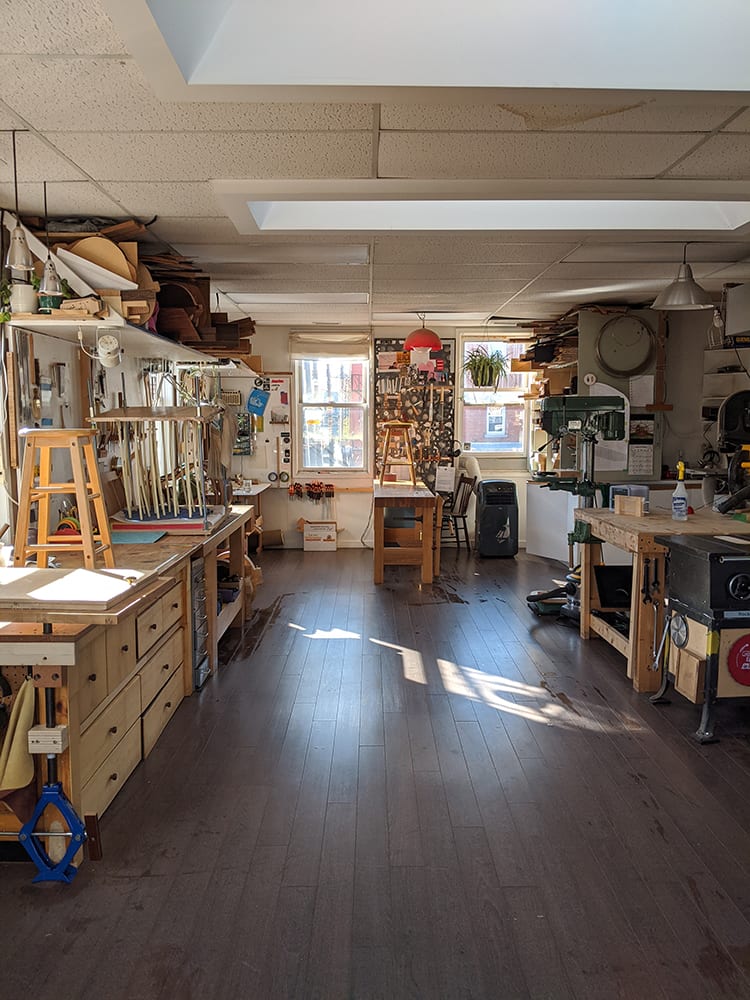
Shaping of body, neck, and fingerboard
When I start a guitar, I mill up three wood pieces for the body, neck, and fingerboard into blanks. They each take shape independently for a while, before the focus shifts to unifying the pieces. I love this part of the process because it involves making a lot of dust and the progress is palpable in relatively short spans of time. It took me a long time to learn the basics of how to square up a board or how to make a tight joint, so it feels celebratory to do it now.
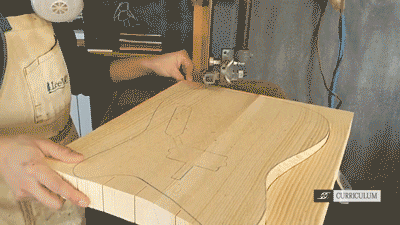
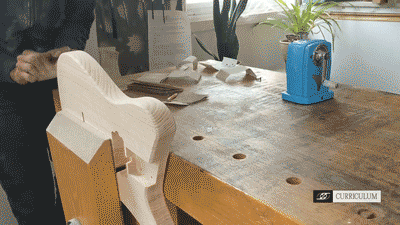
For this guitar, I used Sitka spruce for the body because it’s a great tone wood, is lightweight, and has a high strength-to-weight ratio. I started this build with a Black Walnut neck and Robinia fingerboard, but that changed part way through the process.
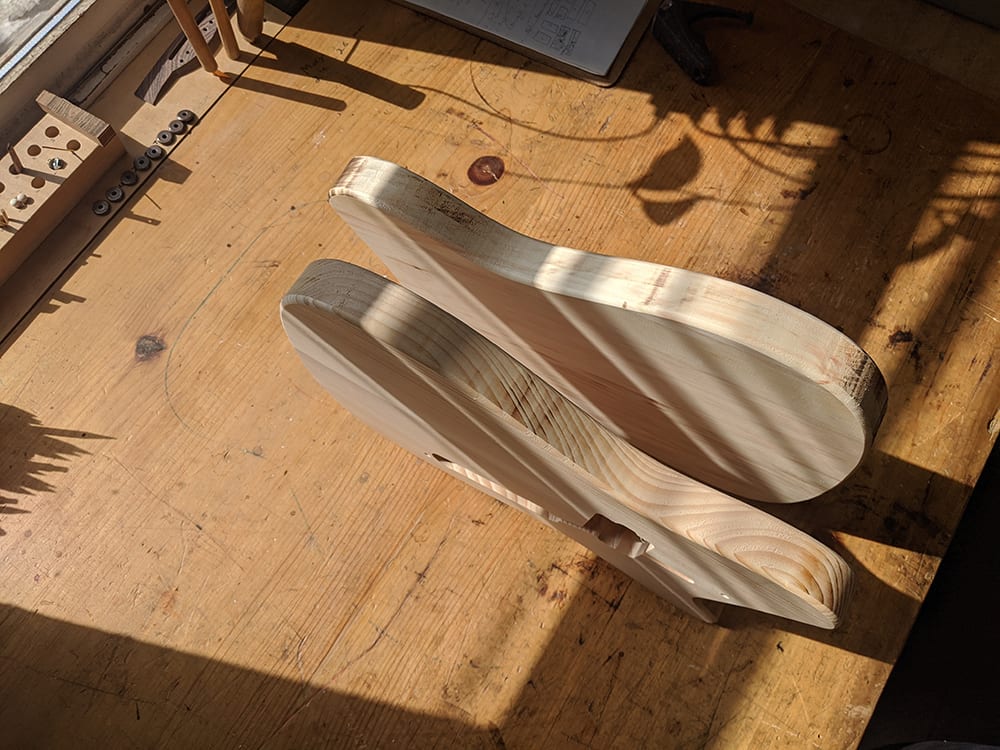
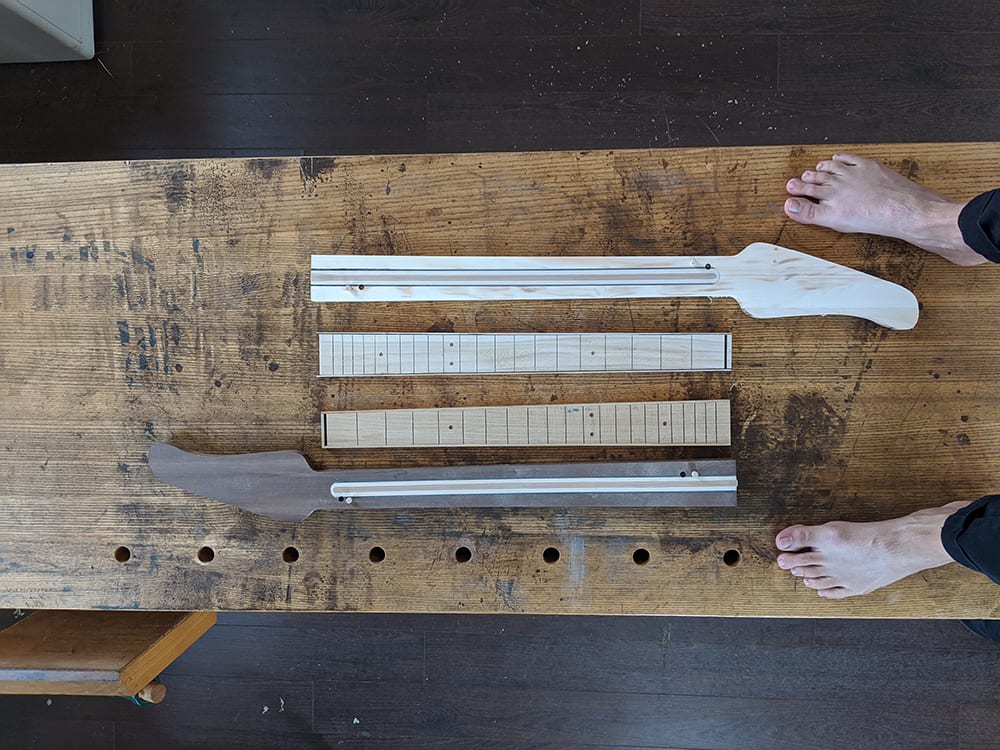
At the beginning stages of a build, I use a combination of hand tools and power tools to make cuts. To make the general body and headstock shapes of the instrument, I use templates that my friend Aaron Parker, who helps me design the aesthetics of the guitars, draws as vectors. Then, I have these lasered or cut out of plywood or plastic. I also use a number of handmade devices that hold work and guide tools called jigs.
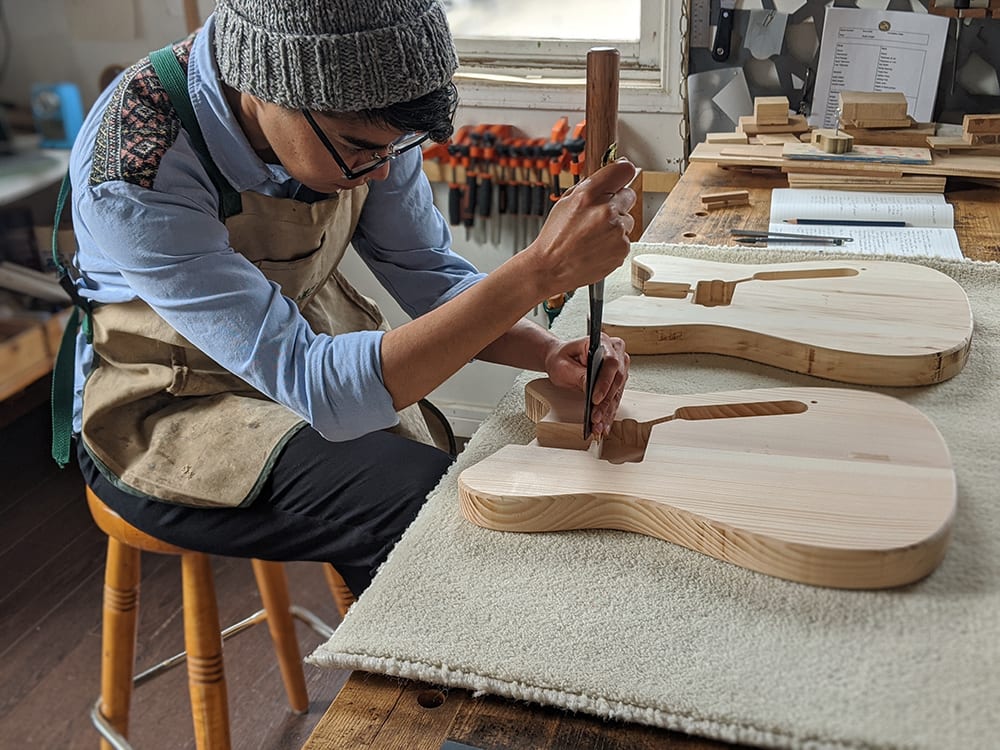
Broken Neck/Starting Over
Even though I very much dislike making jigs, I’m always adding to and improving upon them because they make my work more efficient, reliable, and safer. On this build, I made a new set of jigs that helped me shape the neck and fingerboard.
A long way down the process, I discovered that I had made an error in my jigs, which meant that I not only had to make them again, but I had to start my neck and fingerboard again too. This set me back a number of weeks.
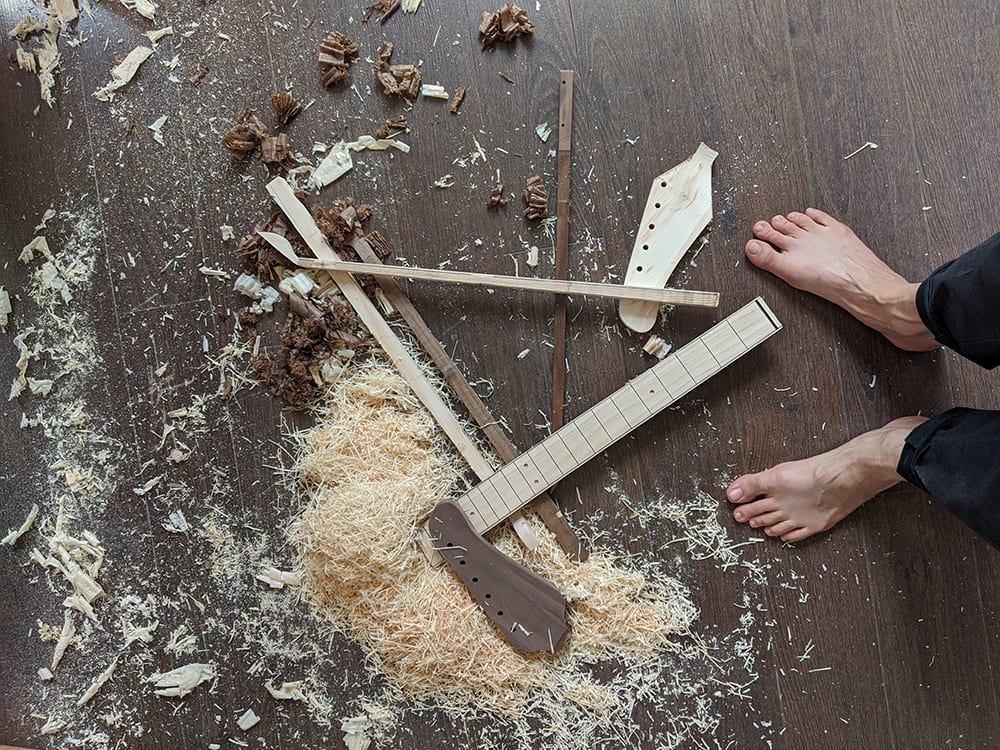
I somehow managed to get a surprising amount of work done in an undeniable state of shock immediately after discovering my error and its implications, but as soon as that started to wear off I knew I needed to head home, get in the comforting waters of my bathtub, and let it sink in.
I did remake the jigs and started the necks over, this time using some Indian Rosewood since Fabi has an affinity for Rosewood and it nicely matched the body colour we were discussing. Indian Rosewood is harvested primarily for use in perfumes, so when sanding and cutting into it, the fine dust fills the shop with a very distinct fragrance.
When the two pieces of the guitar (neck/fingerboard and body) finally came together, they were then separated again to be worked on individually.
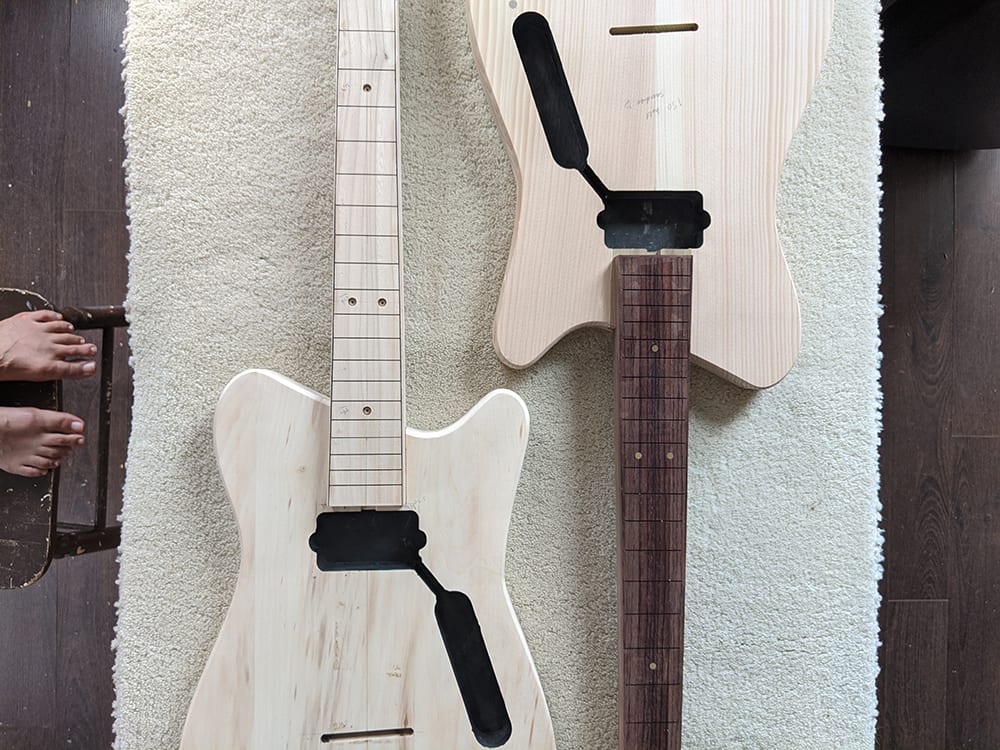
Colour
Fabi and I had gone back and forth around colour. The initial photo she sent was of a handwoven suit, and from this we sent each other photos and paint swatches until we came up with a colour that felt close. I remember talking to Rob Bustos at Vancouver Guitar Finishing—where I send my bodies to get painted and finished—on the phone, pacing the back alley of my shop describing the changes we wanted to the colour. He got the paint closely matched and then hand mixed the rest to get it just right—the finishing process takes a few weeks.
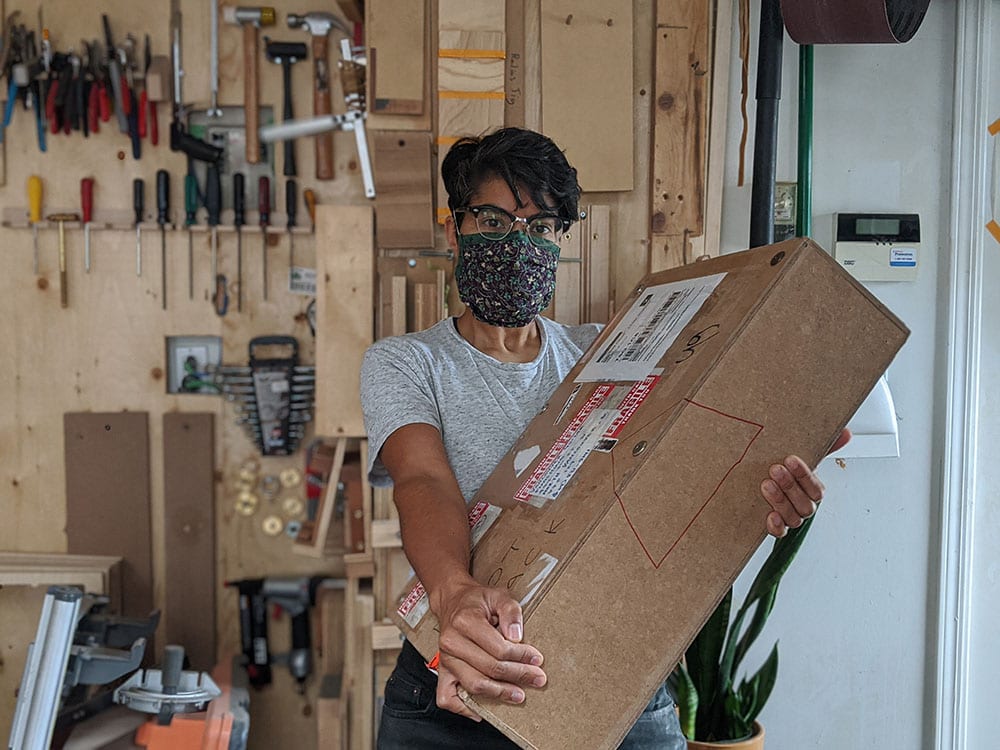
Carving
While the body was getting finished, I worked on carving the neck. I’m methodical about the process: I start out with drawings and remove material in facets to help me ensure the neck is carved accurately. Though I used to struggle with it, carving the transition between the flat headstock and the rounded neck (the volute) has quickly become one of my favourite parts of the process. I use various hand tools to do the carve, including files, a scraper, a chisel, knives, and finally, lots of sandpaper.
I also worked on fretting the fingerboard, which includes some prep, and filing the fret ends for hours once the frets are glued in place.
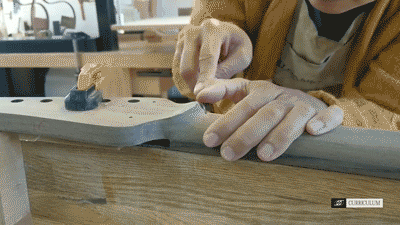
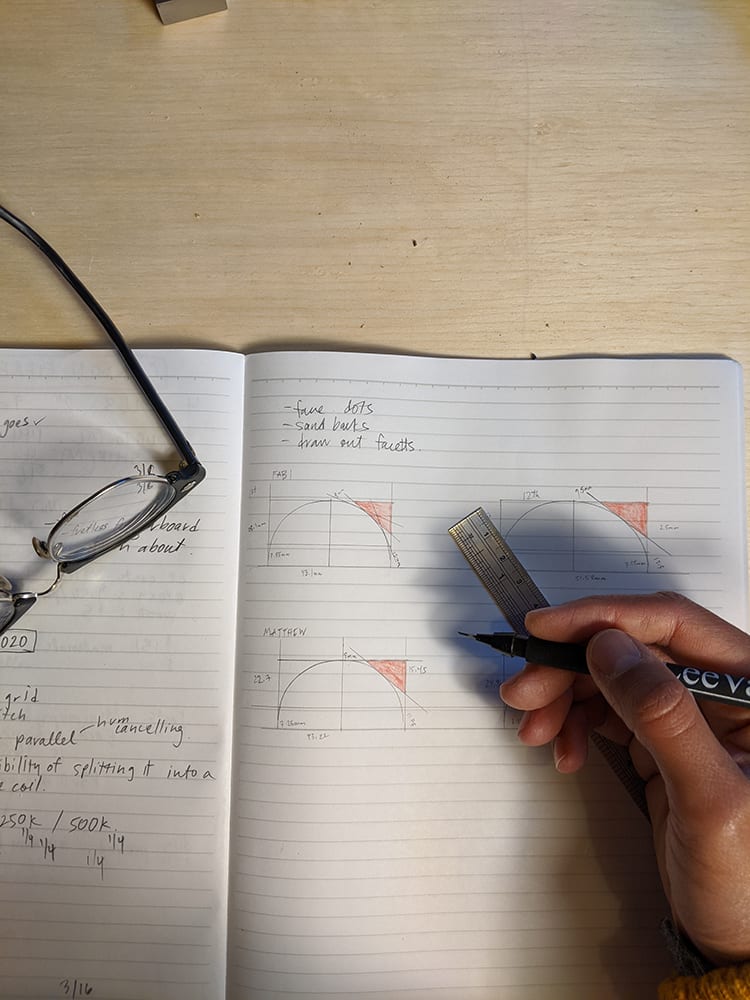

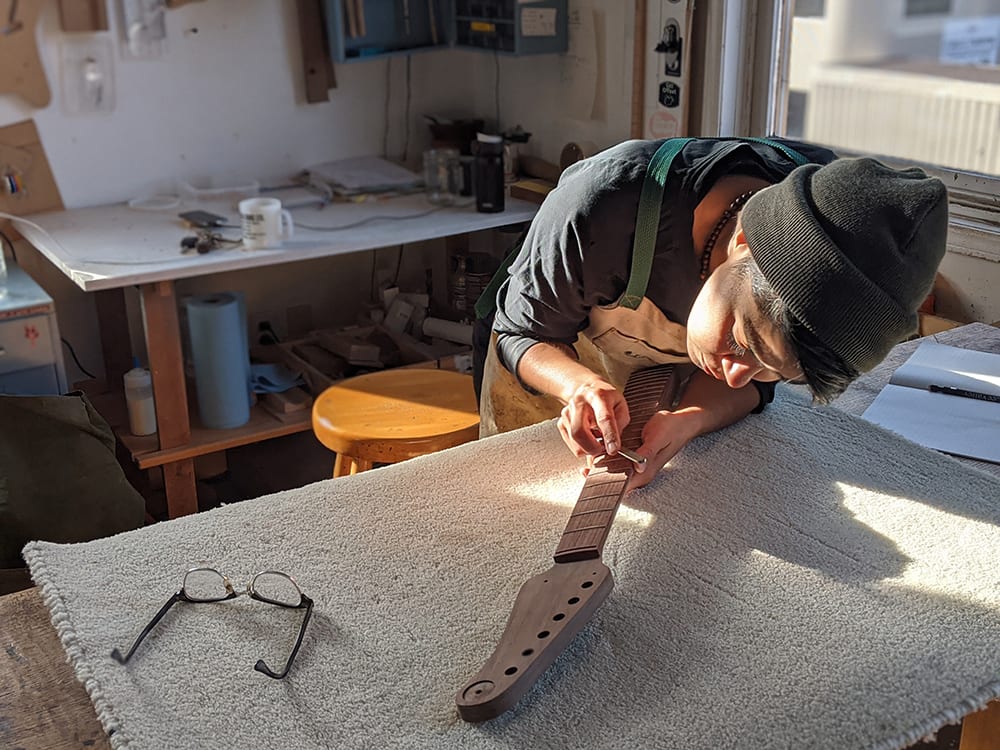
Parts
Once the neck was carved, I worked on making some of my hardware—I make my bridges, nuts, and string retainers out of brass by hand in my shop. It’s messy and hard on the fingers because brass heats up really quickly, but the beauty makes it worth it. I also worked on getting pickguards made.
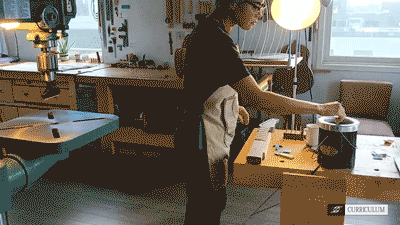

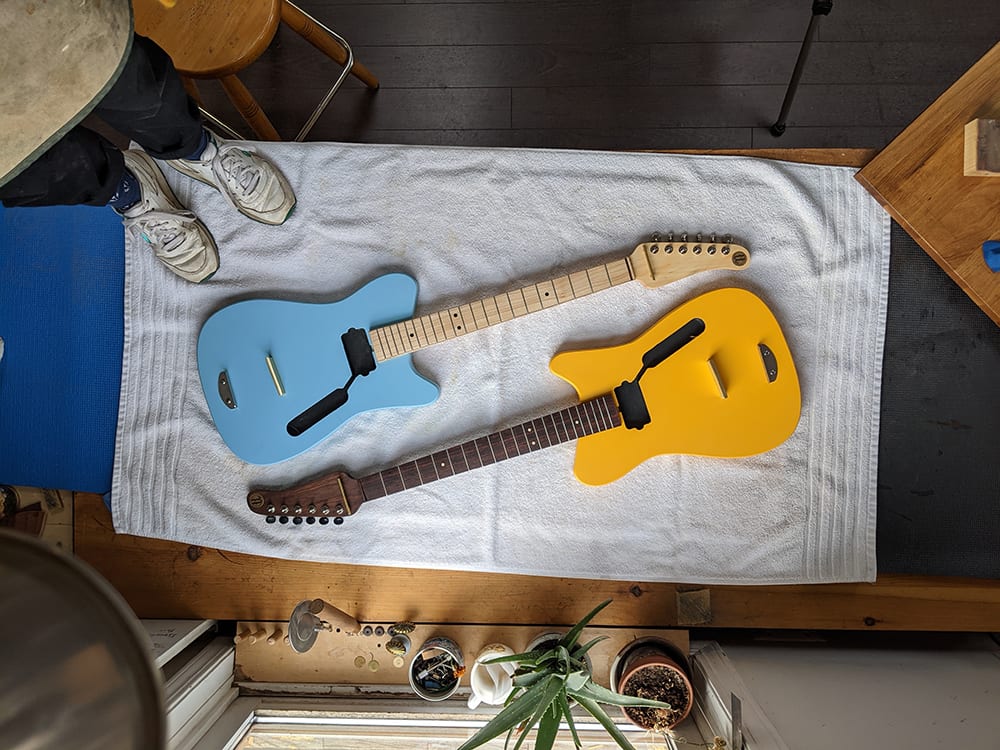
Assembly
The guitar body returned finished after a few weeks, and the guitar was ready for assembly. My friend Stefan Duret helped me wire up the pickguard with electronics, including a hand-wound single-coil pickup by Ken Calvet at Roadhouse Pickups. And at that point I was ready to fully assemble the instrument and set it up!
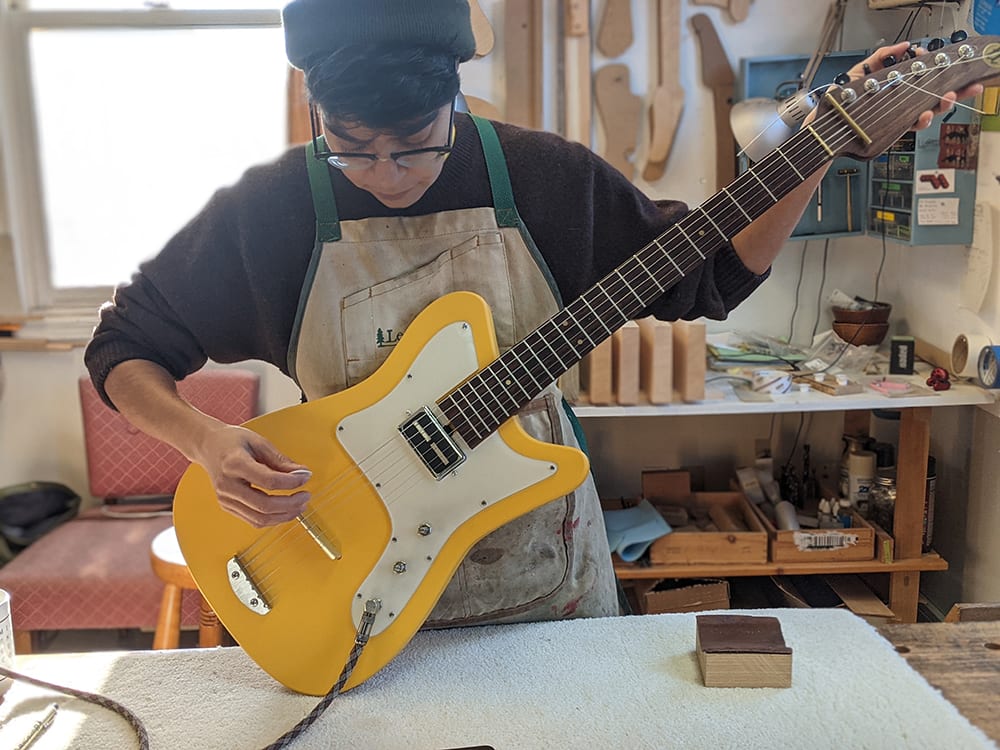
Before shipping the guitar to She Shreds, I fussed over small details for a while, getting ready to let it go. I also shared it with a couple of the people I collaborate with throughout the process—it feels nourishing to be able to celebrate the end product with the people who helped make it happen.
This guitar build was really significant and meaningful to me because I feel so aligned with She Shreds in our work and how we share the value of centering musicians that are typically left out of the guitar/gear world. Additionally, this was the first guitar I built without my mentor in the shop with me due to the pandemic. As you can tell, I’ve always loved and relied on interdependence as a part of my process; this build taught me to trust myself as much as I’ve learned to trust my collaborators—an unexpected pandemic lesson.
I was once asked what it feels like to hear someone play one of my instruments for the first time, and I answered that it felt like a gift I couldn’t ever give to myself. This collaboration with Fabi has been such a pleasure, and it truly feels like a gift to know that this guitar is in the hands of one of my favourite shredders.

You May Also Like
No related posts
No related posts
More posts
-
By: She Shreds
-
By: Leila Sidi
-
By: Kinseli Baricuatro
-
By: Kinseli Baricuatro
-
By: Charlotte Friesen
-
Powered By: Reverb
-
By: Glenn Van Dyke
-
By: Jess Garland
-
By: Jess Garland
-
By: Glenn Van Dyke
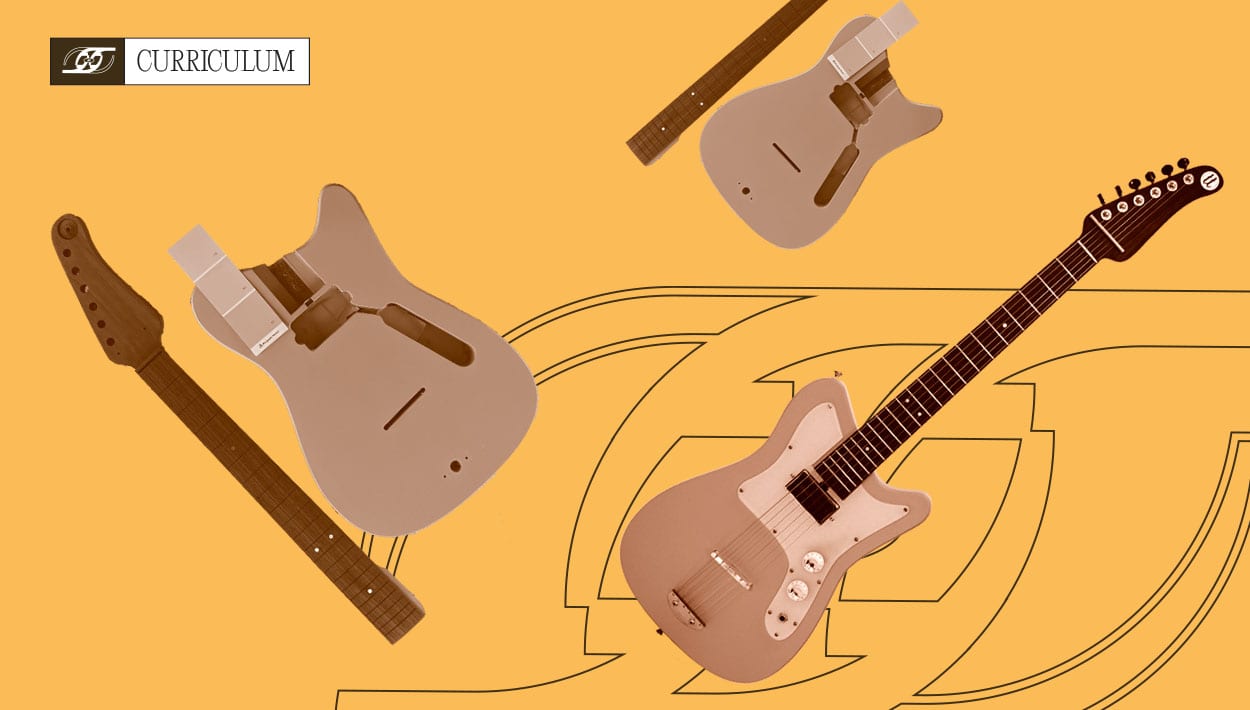
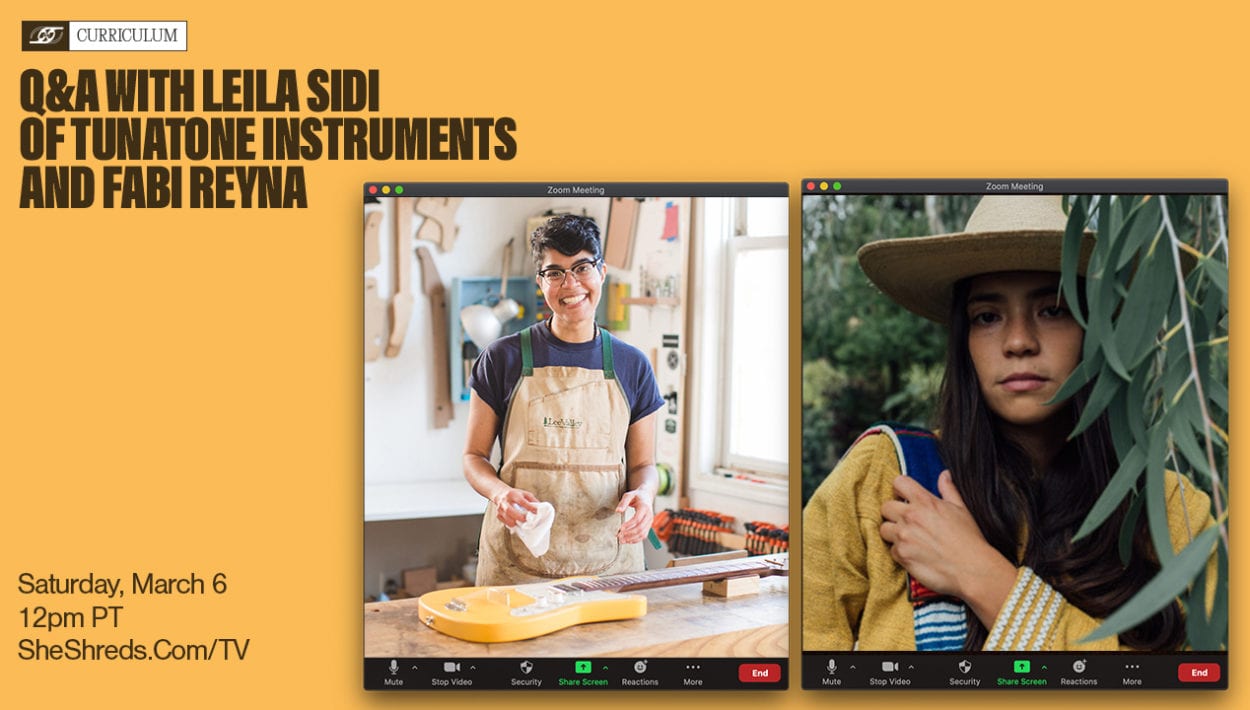
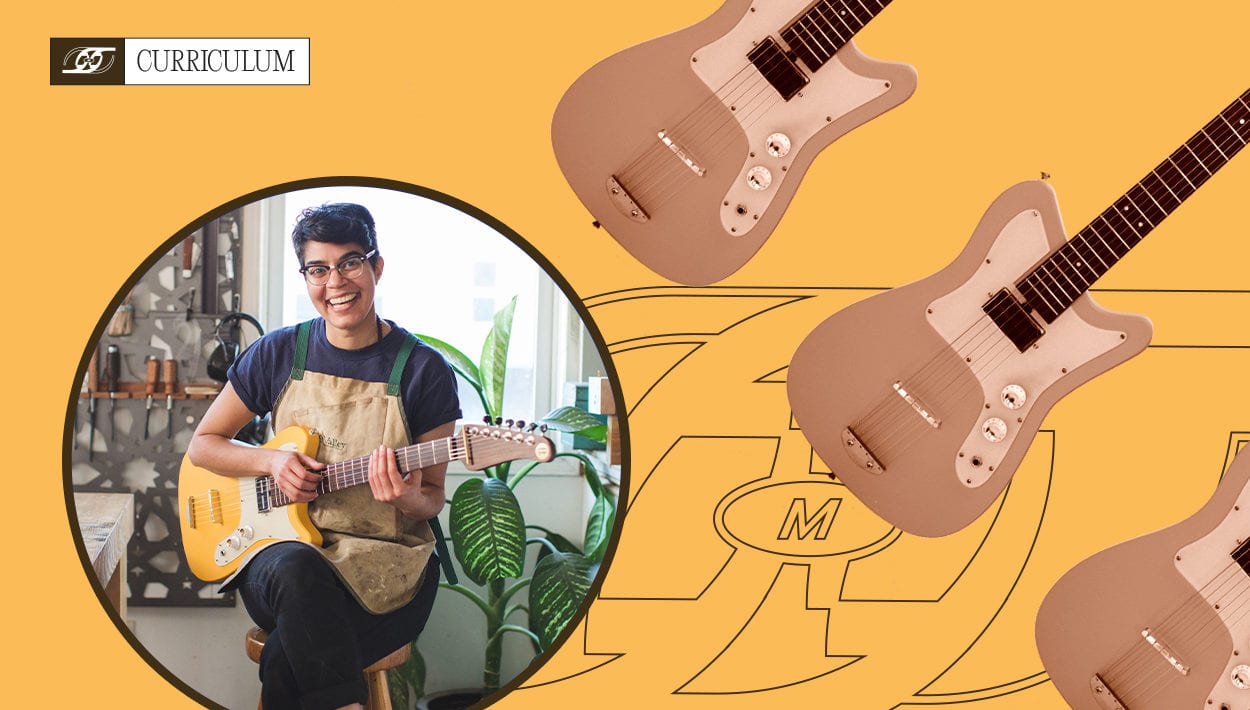
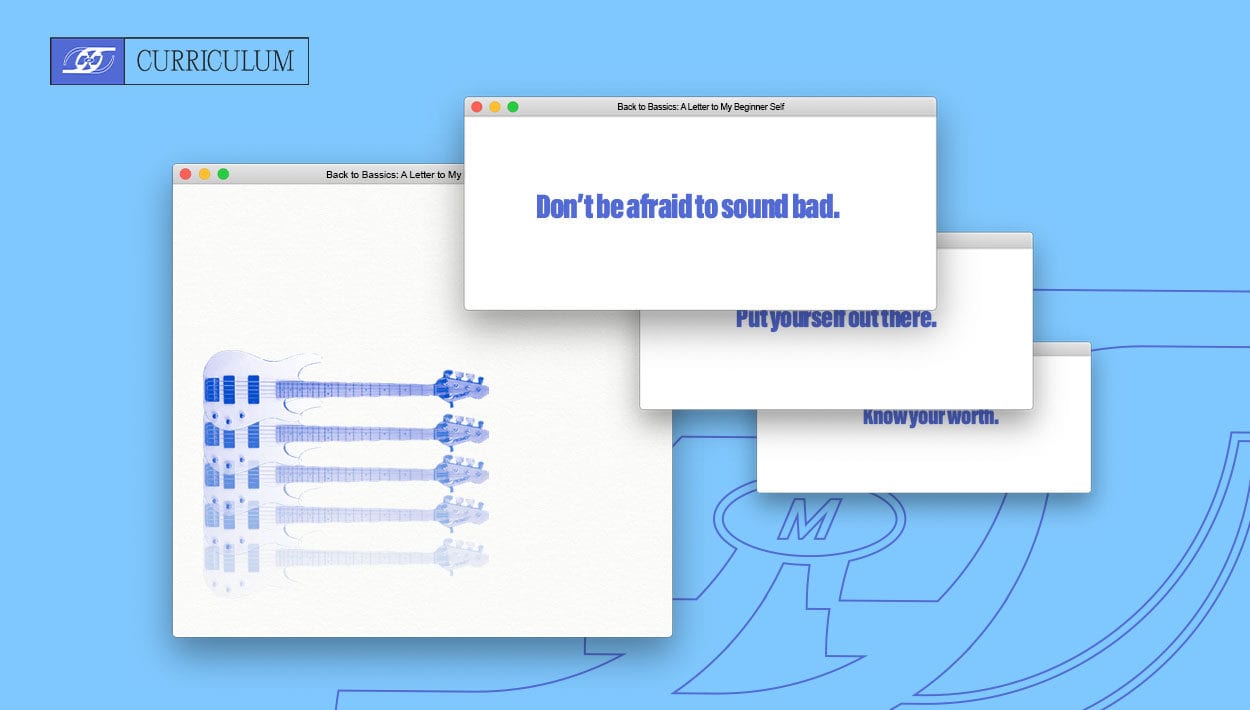
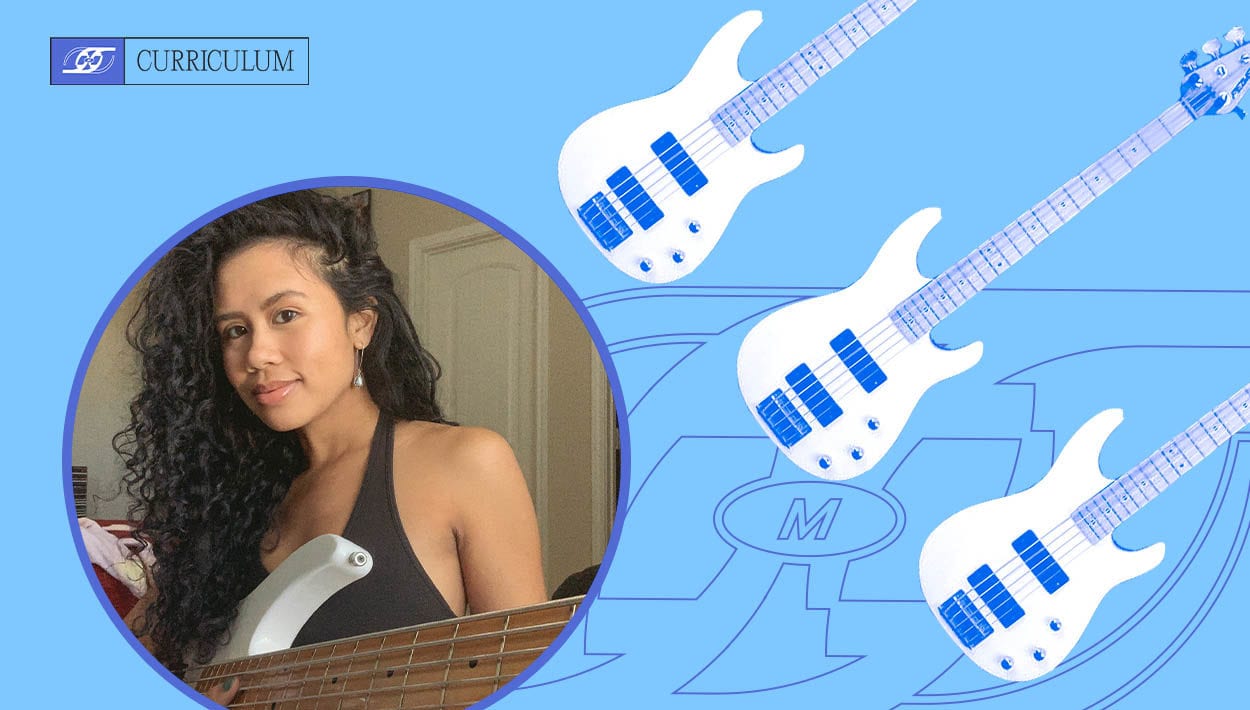
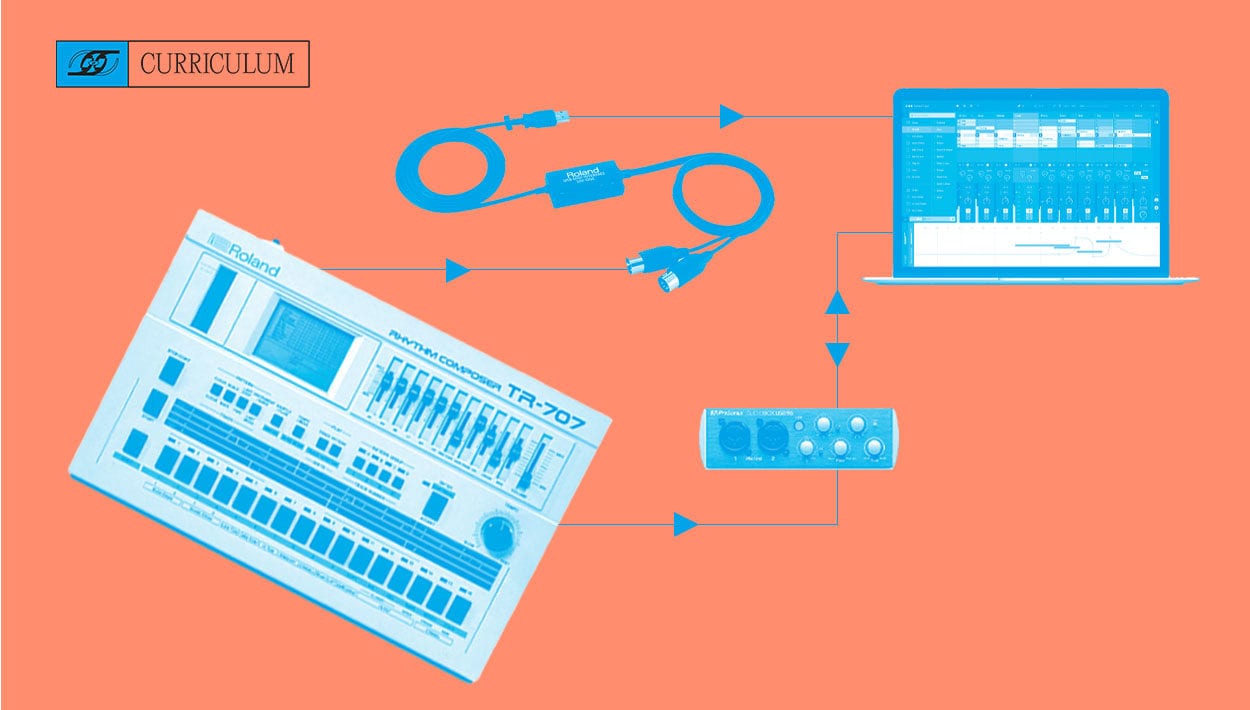
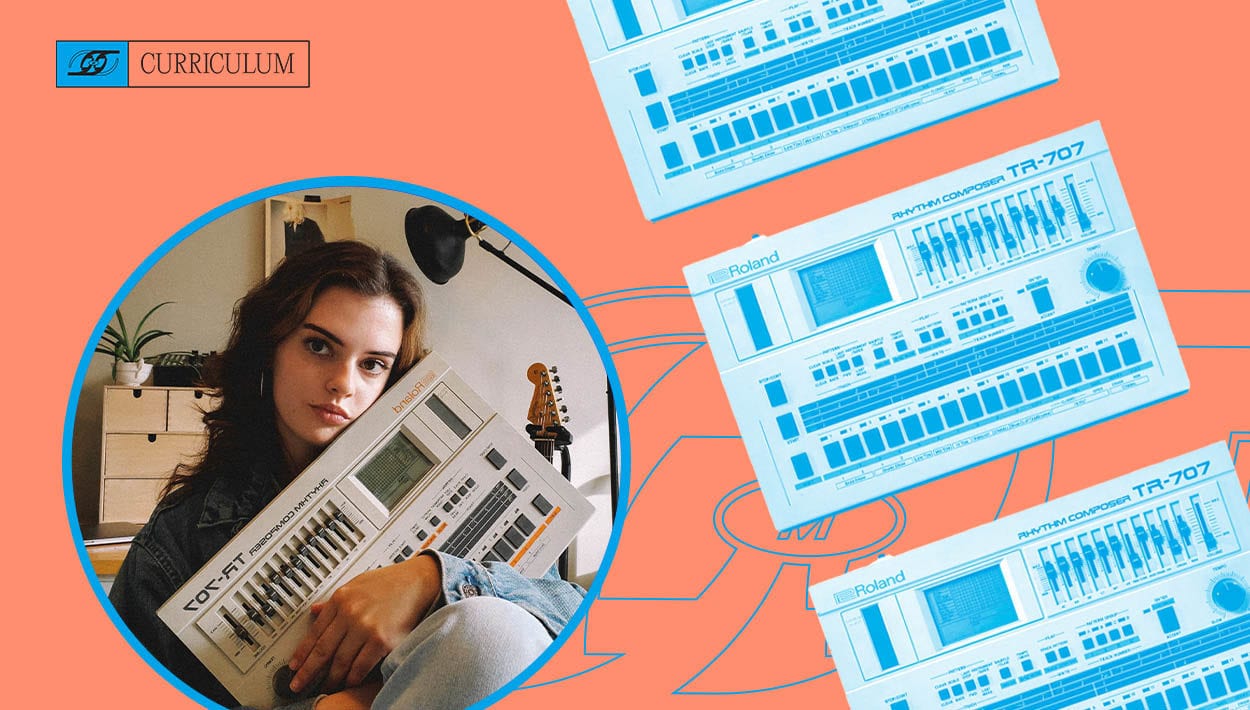
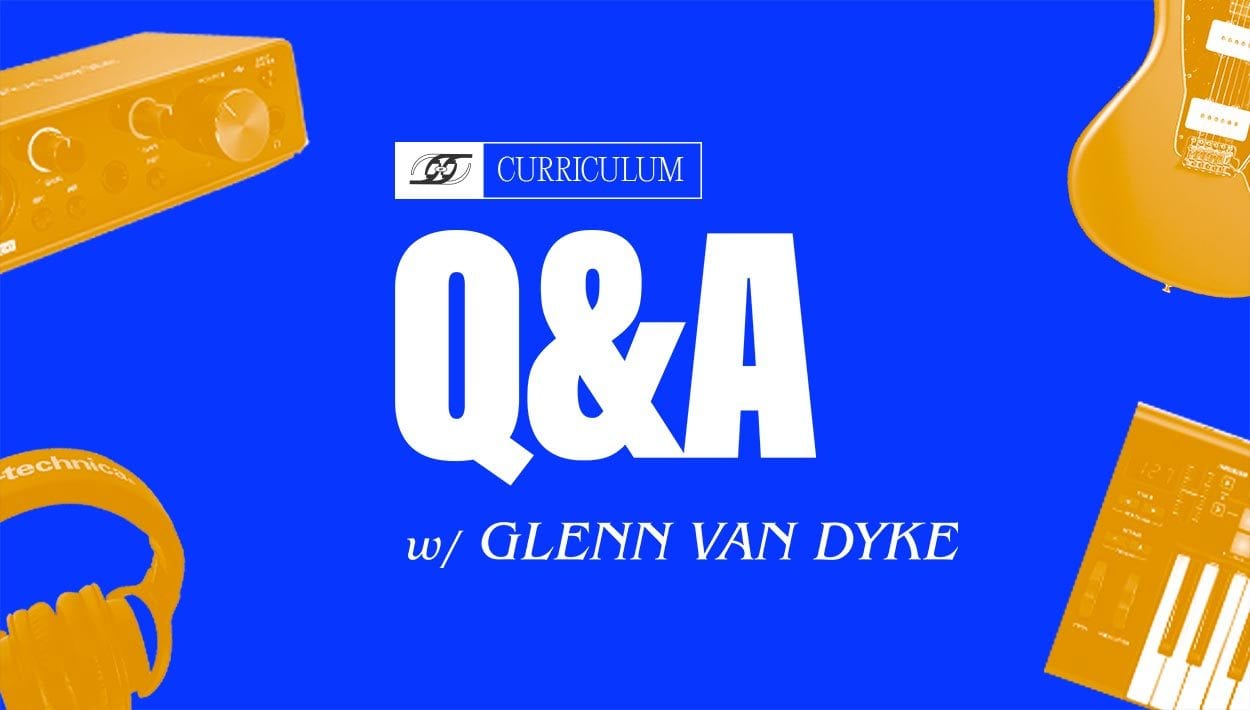
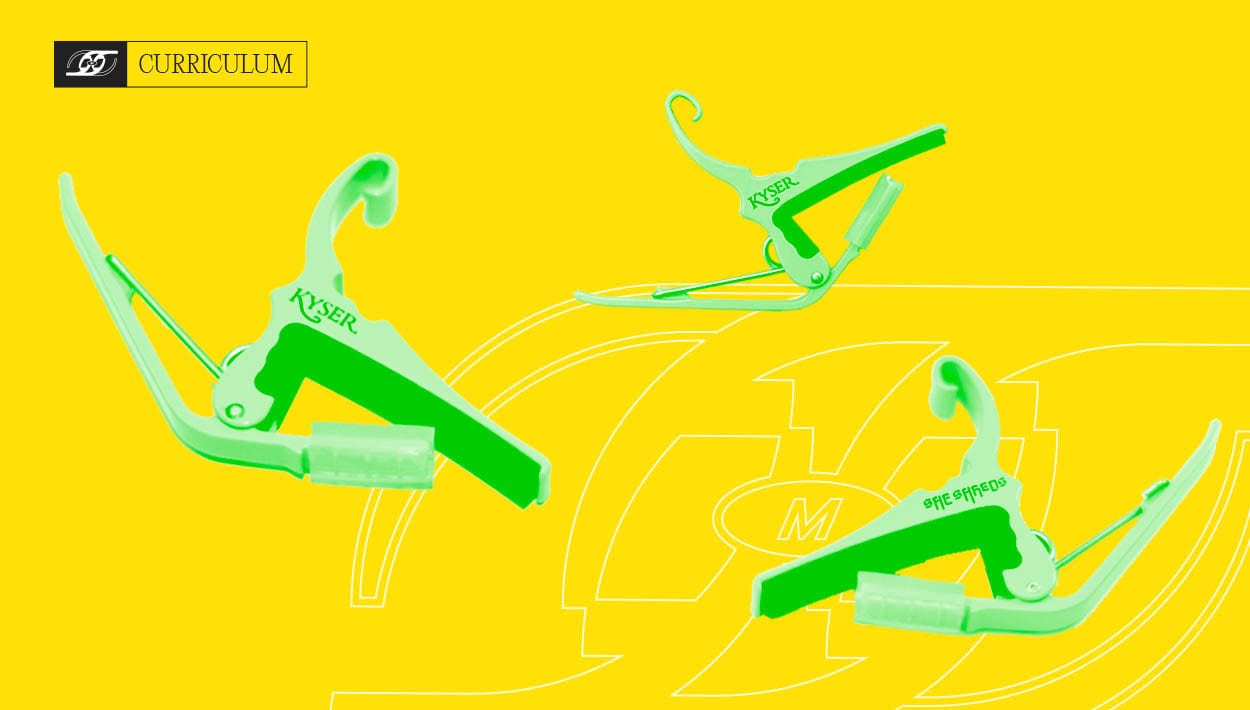
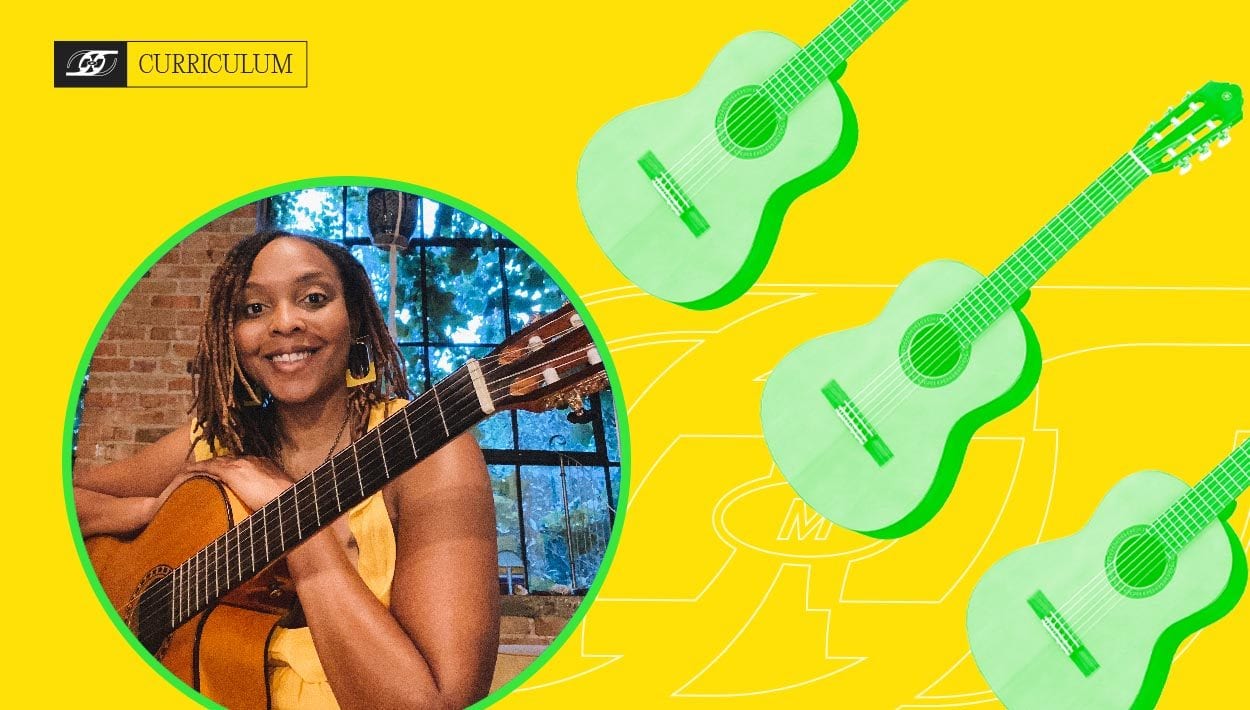
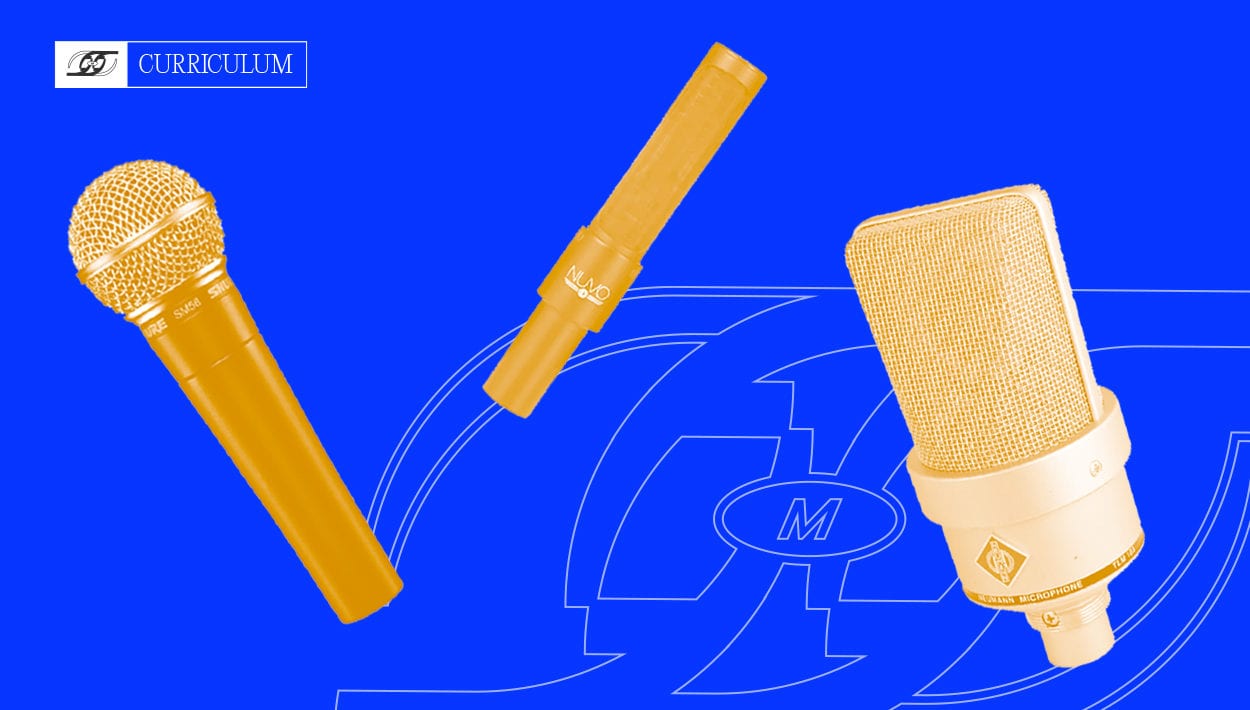


Comments
Very nice work. Is the bridge adjustable in height from the back, or do you use shims underneath?
Comment by Don Baker on March 2, 2021 at 11:15 amAnd I’m very jealous of your workshop.
Managing the curriculum is important for study, and it is great that the design of your website is such an easy to use. I would like to take some of the courses available online while experts https://studyclerk.com/ give me the professional essay writing help. I hope that I will have more time to learn playing the electric guitral while experts take care of my tasks. It really helps to manage my curriculam.
Comment by Michael Dane on May 11, 2021 at 7:28 amNot a bad enough interview. But I still lacked the development of topics. A detailed description of some of the statements. I am a student studying to be a journalist and studying the subject of writing. It is very interesting for me to also draw something new from famous people. With the writing of the essay, I nevertheless decided to turn to specialists, since a lot depends on its assessment. I recommend you the service that came to my aid. I am very pleased with their work. The topic turned out to be very cool. Interesting, original. Thanks to the authors.
Comment by buy thesis on May 23, 2021 at 9:00 amI have order a guitar from a local company and livingston pars has to deliver it but i don’t know why it does not get to me, i have contacted the Livingston pars tracker company but they are not responding, but i Really love your guitar
Comment by Alex on September 17, 2021 at 4:30 pmA good article, a good book can change the fate of so many people. Thanks for the valuable sharing, please keep it up to date and I will always follow you.
Comment by poppy playtime on June 12, 2022 at 9:36 pmMany people’s lives can be changed by an excellent book or article. I appreciate you offering this useful information, so please keep it current. I’ll follow you constantly.
Comment by wordle today on July 25, 2022 at 1:18 amI’ve just started learning guitar and my issue is the same which is the weight of it. How can one expect to adjust such a large-bodied instrument? I especially took help with dissertation writing so that professional writers could do my project on my behalf and I could learn a few guitar techniques but the guitar’s weight has become a hindrance.
Comment by Sophiekells on November 24, 2022 at 4:07 amGood articles and books may affect many lives. Keep sharing, and I’ll follow you.
Comment by color by number on February 14, 2023 at 5:22 pmthis is a five-letter quordle word guessing game similar to wordle , every guess will apply letter to four words at the same time . you can get the nine guesses for six correctly all four words . it all like that you play wordle four time’s in a day . but today’s quordle isn’t nearly as intimidating as it’s own sound .
Comment by Quordle today on May 27, 2023 at 1:55 am